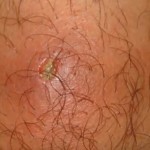Soybeans belong to the legume family that also consists of foods like kidney beans, peanuts, lentils etc. Soybean is consumed in its first form like kidney beans but most popularly in a processed form such as tofu, soy sauce, vegetable starch, cereals and peanut butter and most often in Asian cuisines followed by Western cuisine. Its popularity makes it one of the most difficult allergy causing food items to stay away from.
What is soy allergy?
When the soy proteins that are usually harmless are fought by body’s immunity by creating antibodies against them it causes allergy. Such proteins are mistaken for foreign elements by the immune system by releasing chemicals to save the body.
Signs and Symptoms
- Abdominal pain that could be mild to severe.
- Fever or Blisters of fever
- Swelling and itching of the eye or a pink eye (Conjunctivitis)
- Feeling of Nausea or vomiting
- Symptoms of a soy allergy may range from mild to severe and include.
- Severe skin reactions such as Eczema
- Sneezing, runny nose
- Drop in the blood pressure
- Swelling in the throat

Treatment
There is no specific medical treatment except avoiding it completely once it’s detected. People, who are allergic to soy, must be very careful in reading food labels to avoid products that contain soy. Also keeping the same in mind while eating out would be helpful.
Testing
Though there is no particular for such an allergy, but a few tests could be helpful in diagnosis:
- The suspected allergen is put on the skin in its tiniest amount and then tested with a needle by pricking the skin. A red bump, if formed denotes that it is causing the allergy or the person is allergic to it.
- In this case a small quantity of allergen is injected under the skin which is more sensitive than the other tests.
- In case of infants, blood test could be done since their skin is too sensitive for prick tests.
- The best an easiest way is to feed increasing quantity of the allergen that is suspected to check the symptoms.
- Elimination the suspected food from the diet for a few weeks and later gradually adding them back to the diet while observing the reaction/symptoms is also a convenient option.
Types of Soy allergy
Soy allergy can be commonly seen through the following products:
- Soy Lecithin Allergy
- Soy Milk Allergy
- Soy Protein Allergy
- Soy Oil Allergy
- Soy Sauce Allergy
- Soy Allergy
Avoiding Soy
Since there is no concrete treatment for this allergen, it is a wise choice to avoid it by being more informed about the food products that contain soy in any form which is harmful for the vulnerable individual. But it is indeed not an easy task to avoid soy as it is predominantly present in our food products consumed on a daily basis and also in the supply as well as manufacturing/processing of non-food products. The Food Allergen Labeling & Consumer Protection Act of 2004 (FALCPA) has strict regulations and guidelines for the manufacturers to transparently mention the ingredients containing soy on product labels. However, regarding soy specifically there are a few exceptions that the Food Allergen Labeling & Consumer Protection Act has made; if a product contains only refined soy oil, the manufacturers need not label that product as “contains soy”. The same exception applies in case the food item contains soy lecithin used as a release agent.
- All product labels must be carefully read before buying and consumption of any product. Sometimes the same product which is soy free changes its ingredients without any warning.
- Avoiding food product that contain; Miso, Shoyu, Edamame, Tamari, Tempeh, Tofu.
- Asian cuisine is the most soy containing cuisine, so one must be careful before relishing it.
- Soy is also found in Vegetable gums, Vegetable froth, textured vegetable protein and vegetable starch.
- Many food items such as bakery products, canned tuna and meat products, protein bars and energy snackers, canned soups, broths and starch, cookies and cereals are the unexpected sources of soy. A lot of infant formulas also consist of soy.
- However studies show that highly refined soy oil can be safely consumed by the individuals who are allergic to soy.
- Cross reaction: Since soy belongs to the legume family, like kidney beans, peas, and peanuts, the same can also cause reactions but sometimes no reaction/ allergies at all.

